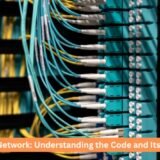How SSAE 18 impacts vendor risk management?
The ssae 18 standard has reshaped how organizations approach vendor relationships. Issued by the American Institute of Certified Public Accountants (AICPA), this framework establishes more rigorous requirements for service organizations and directly influences third-party risk assessment and mitigation strategies.
Continuous monitoring requirements
Organizations implementing this standard now shoulder greater responsibility for ongoing vendor surveillance. Rather than depending on occasional audits, they must continuously monitor vendor controls. This shift requires developing structured frameworks to measure vendor performance against specific compliance metrics throughout the relationship.
Furthermore, businesses must thoroughly document their assessment methodologies and preserve evidence of monitoring activities. This documentation becomes essential during audit processes, clearly demonstrating commitment to proper vendor oversight.
Focus on subservice organizations
The standard particularly highlights the importance of monitoring subservice organizations—vendors’ vendors that typically operate with limited visibility. These fourth-party relationships create potential vulnerabilities that can ripple through the entire supply chain.
As a result, companies must ensure their primary vendors adequately supervise these downstream providers. This verification process involves analyzing how vendors evaluate their suppliers’ control environments and security measures. Many organizations accomplish this by examining complementary controls and reviewing how vendors manage their own supplier relationships.
Transformation of risk assessment practices
This regulatory framework demands a more thorough risk assessment approach. Companies need to identify potential threats arising from vendor partnerships, measure their possible impact, and implement suitable controls to address vulnerabilities.
Consequently, this risk-based methodology requires organizations to:
- Categorize vendors according to their operational importance
- Evaluate access levels to sensitive information
- Assess disruption potential from vendor service failures
- Establish appropriate controls based on comprehensive risk profiles
Necessary contract modifications
The standard necessitates revising vendor agreements to include specific control responsibilities and reporting obligations. Consequently, modern contracts typically feature:
- Right-to-audit provisions ensuring access to control documentation
- Mandatory notification protocols for control failures
- Requirements for regular SOC reports addressing specific control objectives
- Clearly defined remediation processes for addressing identified weaknesses
Enhanced documentation requirements
Under this framework, organizations must maintain thorough evidence of their vendor risk management activities. These documentation requirements encompass:
- Detailed vendor risk assessments
- Control evaluation methodologies
- Vendor performance monitoring results
- Management review documentation
- Remediation plans for addressing identified control gaps
Implementation of complementary controls
The standard acknowledges that effective risk management requires coordination between service providers and their clients. Therefore, organizations must implement controls that work alongside vendor safeguards to create an integrated security environment.
These complementary measures must be clearly defined, properly documented, and regularly evaluated. Their effectiveness becomes vital to the overall success of vendor risk management initiatives.
Long-term benefits and operational improvements
The implementation of this standard significantly strengthens vendor risk frameworks by requiring comprehensive monitoring, emphasizing oversight of subservice organizations, formalizing risk assessments, updating contractual requirements, improving documentation standards, and focusing on complementary controls.
Organizations that fully embrace these principles typically achieve better visibility into their vendor ecosystems and substantially reduce their exposure to third-party risks. While establishing compliance requires investment, many businesses find that the resulting improvements in vendor management capabilities provide significant long-term value and can complement a traditional operational audit approach.
Ultimately, this standard helps create more resilient supply chains and fosters greater confidence in vendor partnerships across the organization.
Read Also: Newsinformer.co.uk




























































